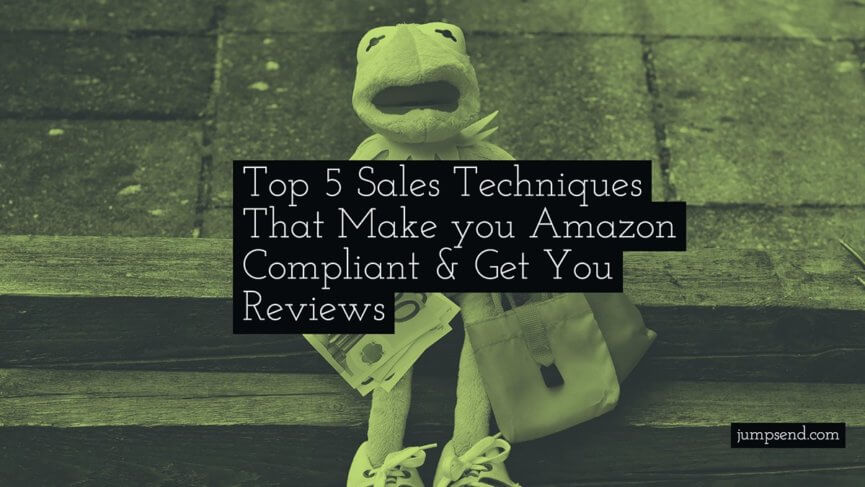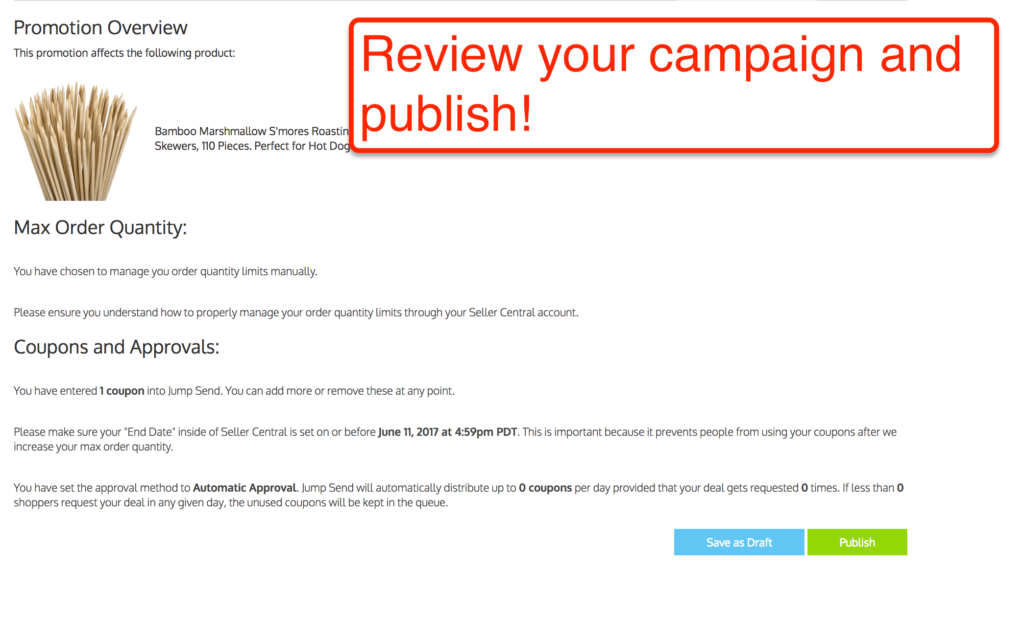Blog: The Million Dollar Case Study Session #12: Amazon Product Launch Strategies
The Million Dollar Case Study Session #12: Amazon Product Launch Strategies
Session 12 of the Million Dollar Case Study was laced with excitement and anticipation. The pieces are quickly (or slowly, if you’re as excited as us) coming together to launch.
We started the session with a sneak peek at the production of the hooded baby towels. They are looking great, and I can personally attest to the fact that they are incredibly soft and luxurious. I may or may not have even tried using it myself as a test 😉
Here are some of the pics that the supplier sent Greg:
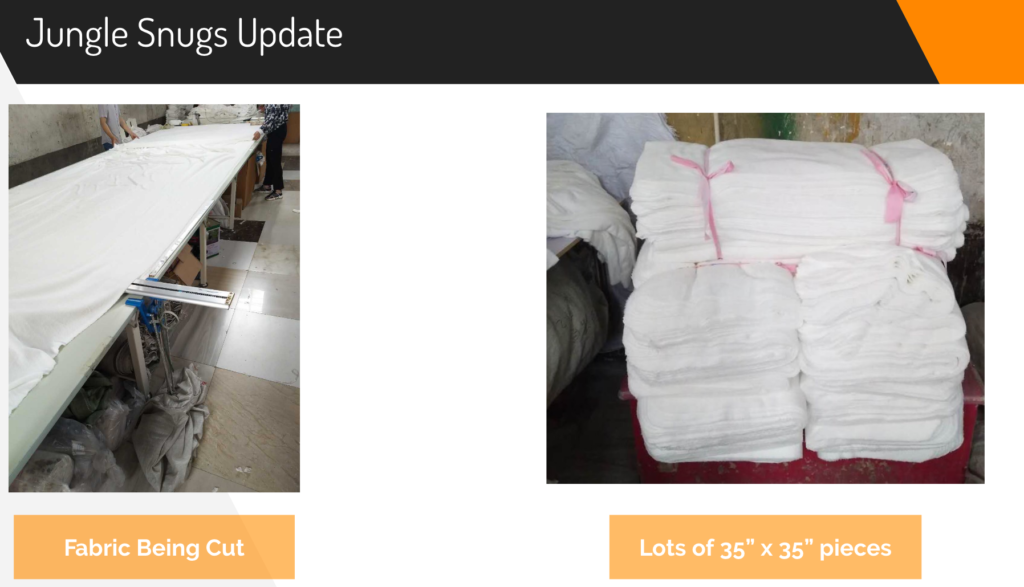
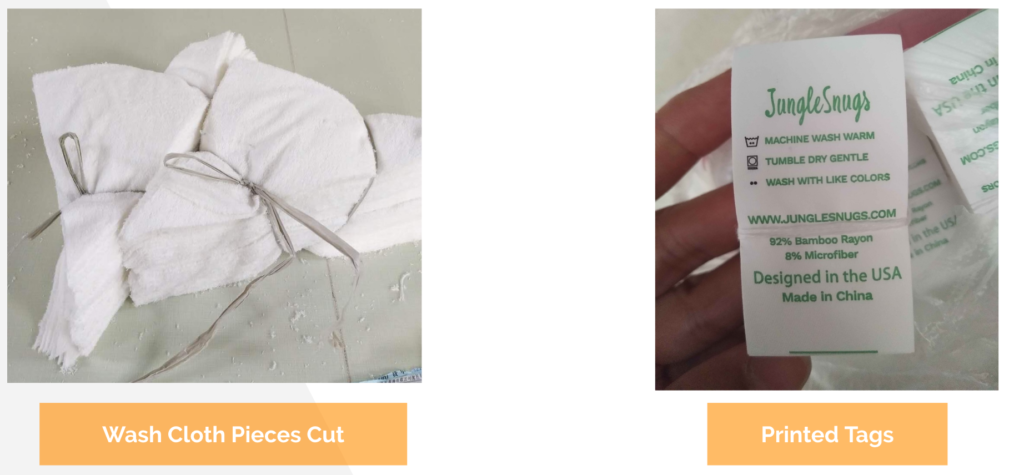
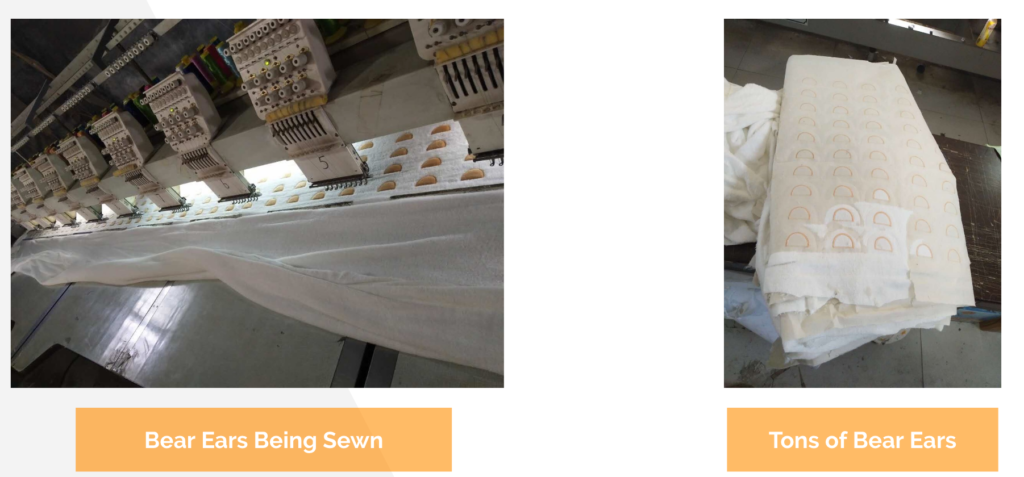
Another update is that the manufacturing is running slightly behind schedule. Greg was smart to include a clause in the purchase order agreement to get a 5% discount for every 7 days the production is delayed. You can get a copy of the agreement used for Jungle Stix here (it’s the same template he used for the baby towel), with the relevant details modified.
Here is the complete webinar replay:
And the slides:
So what does it take to launch a successful product on Amazon these days?
When launching, our biggest goal is to rank for primary keywords relevant to our product. We covered this in Session #11 on keyword research and listing optimization. Ideally, we want to uncover the most relevant keywords, and get our product listing to appear in the organic search results when people search for that particular keyword or phrase.
Here is a visual of the main priority to the Launch Strategy, and the underlying tactics to execute on the goal:
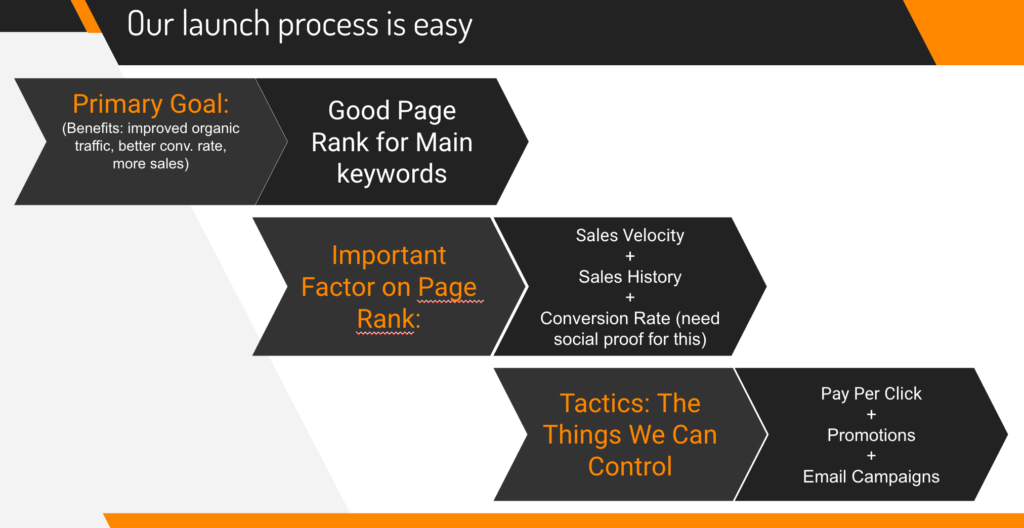
There are a variety of components that influence the keyword ranking, but there are three that we can directly influence in this launch strategy:
- Sales velocity
- Sales history
- Conversion rate
So at a high level, we get some quick sales, establish a strong sales velocity and sales history. How? We will do this with promotional giveaways.
This means offering a discount coupon to shoppers – they get our product at a discount, and we get guaranteed sales (boosting our sales velocity, sales history, and conversion rate). That’s a win-win all day!
One preface to this strategy is that you can expect to spend money when you are launching a product. It is an upfront investment in your product, with which you will reap the benefits of over months and years in the future.
Let’s clarify what is within amazon’s Terms of Service
I think one of the most important lessons that Greg has emphasized throughout the whole case study is to do everything clearly within Amazon’s Terms of Service. This is most important as it relates to generating product reviews, especially since the change in Amazon’s Terms of Service last October, that restricted incentivized reviews.
So what is allowed and what is not allowed?
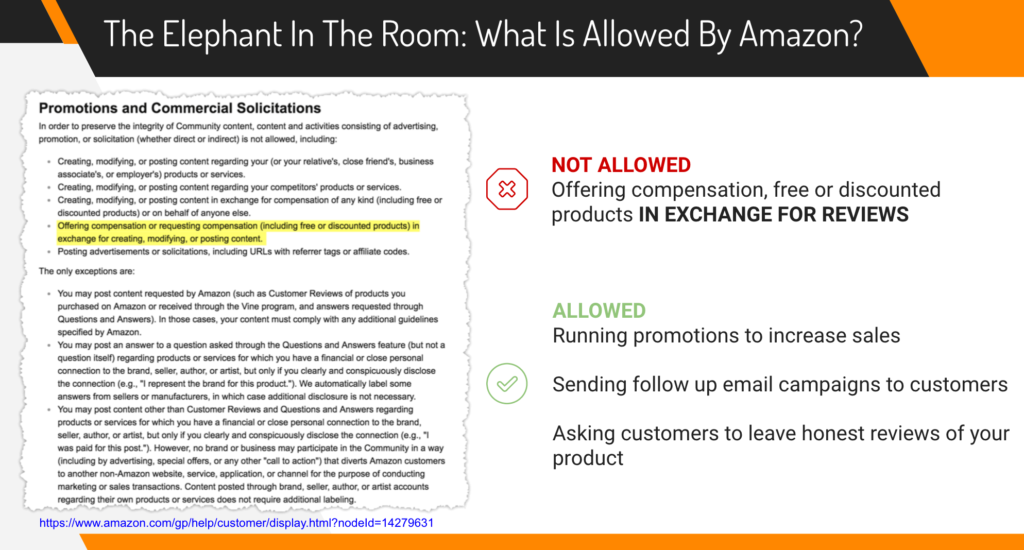
So the most important thing: you are not allowed to offer incentivized reviews. This means that you can not offer discounts, money, or any other compensation in order to get a review.
However, one important channel that you will need in your launch will be emails. The good news is that sending follow up emails to customers is completely allowed by Amazon.
The different strategies to launch a product
There are various strategies and channels that you can employ to launch your product. Greg gave a great overview of the pros and cons of each of these strategies. Let’s take a quick look at each of those here:
Promotions via Deal Sites:
This method is quick and simple, as it just requires a subscription to a deal site where you can promote your product with discounts to boost your sales velocity in the early days
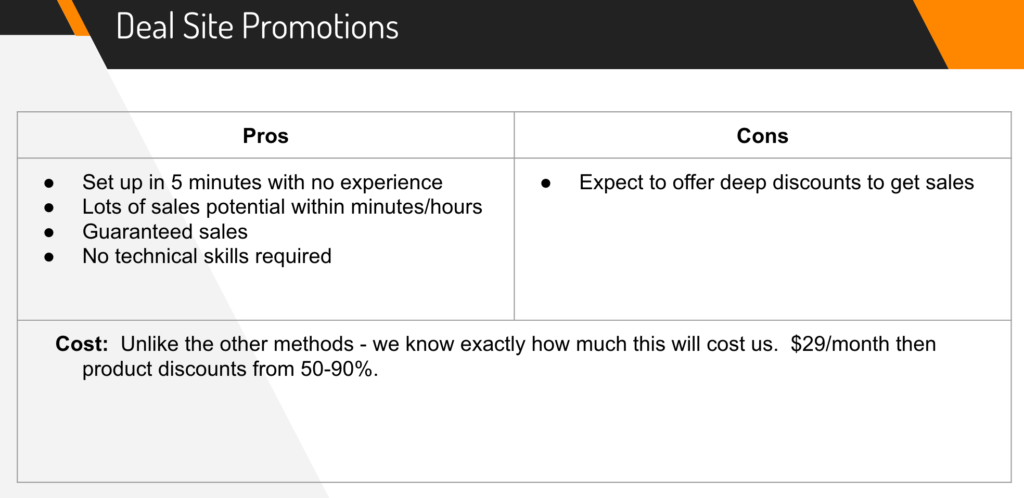
Launch to an existing audience who are interested in your niche:
You could reach out to an audience that are interested in your product niche to let them know about your new product launch. This method requires having access to an audience from the get-go.
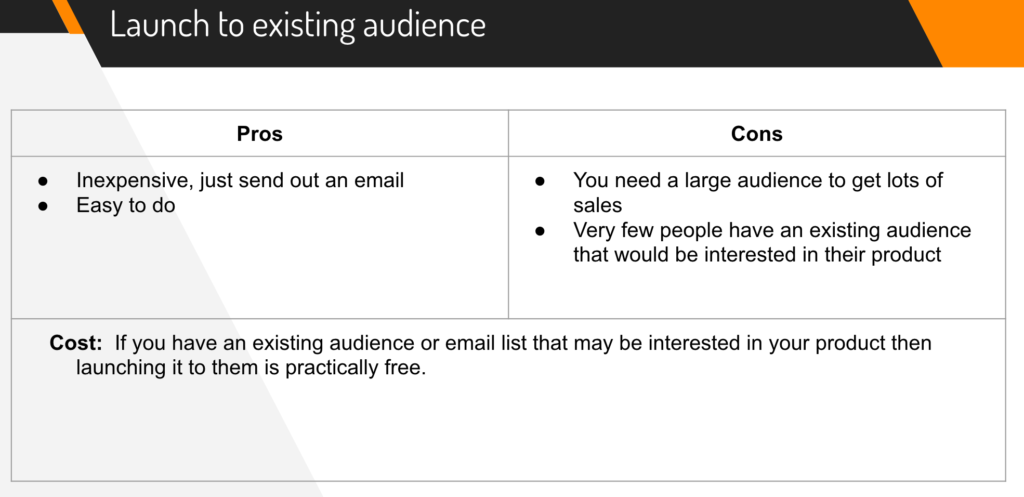
Paid advertisements:
You could run ads on platforms like Google, Facebook and other social media networks to gain traffic to your new product listing and generate sales. Very few sellers are readily equipped to do this in a profitable way, but for those that are, it can be useful in the long-term.
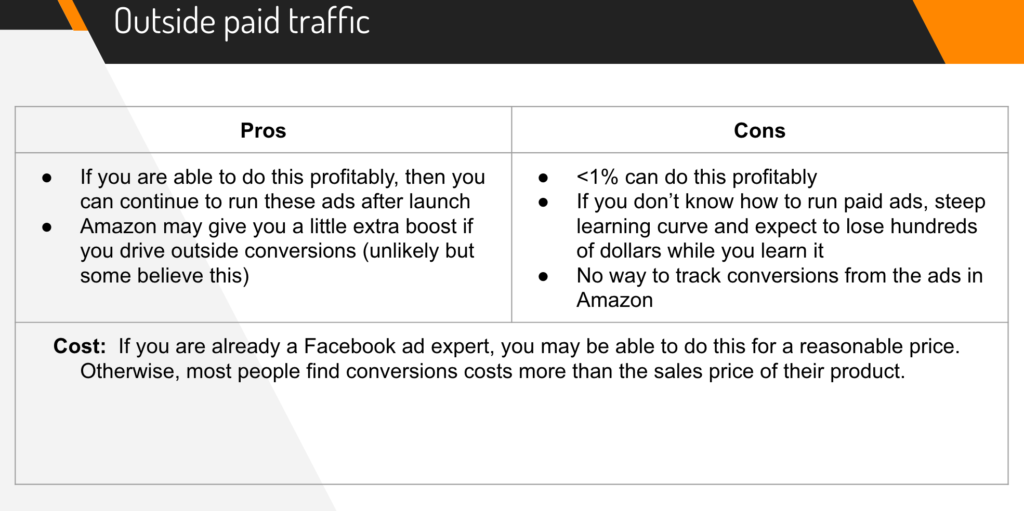
Build your own email list:
Similar to launching to an existing list, you could build your own list of people who are interested in your product niche. This requires upfront work as shown below.
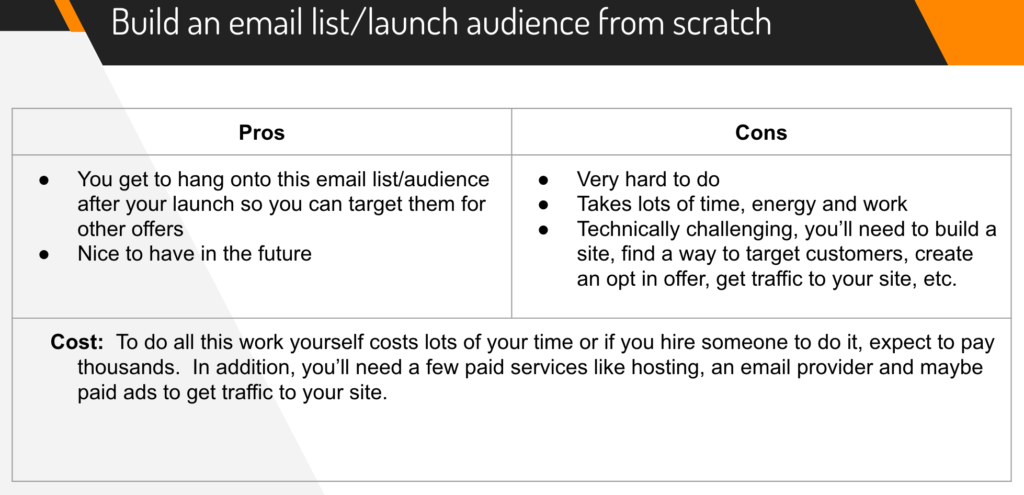
Use Amazon PPC:
As well as running ads to generate outside paid traffic, you could utilize Amazon's own PPC platform.
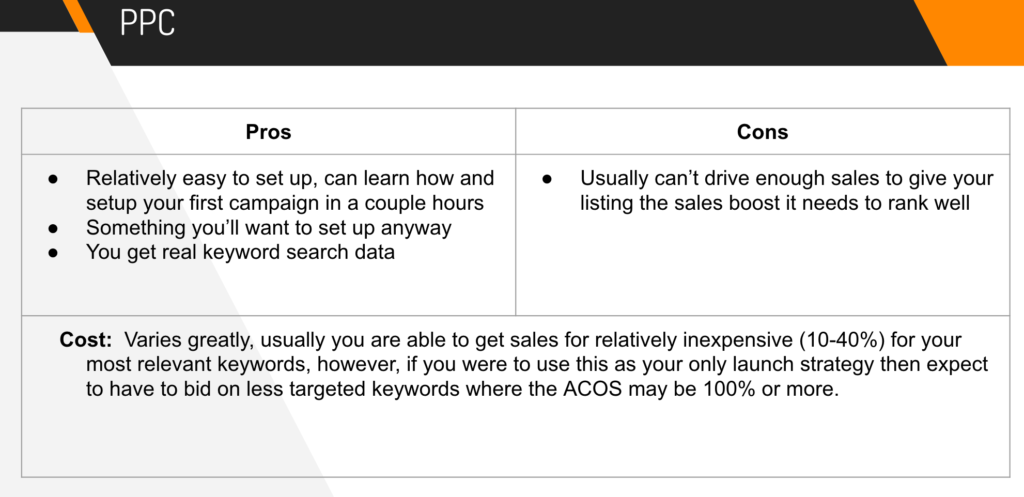
Launch tactics summary
As you can see all of these launch strategies have different nuances. As I already mentioned, we are going to start by using a deals site to run promotions and generate sales. This is because it's the fastest and most cost efficient way to launch. But that doesn't mean the rest of these tactics are redundant, we will definitely return to a few of these in the future to continue our Amazon product marketing and reach that $1 million dollar mark.
Ultimately, everything can be summarized with a simple matrix evaluating the effort, difficulty, and cost required to execute these strategies:
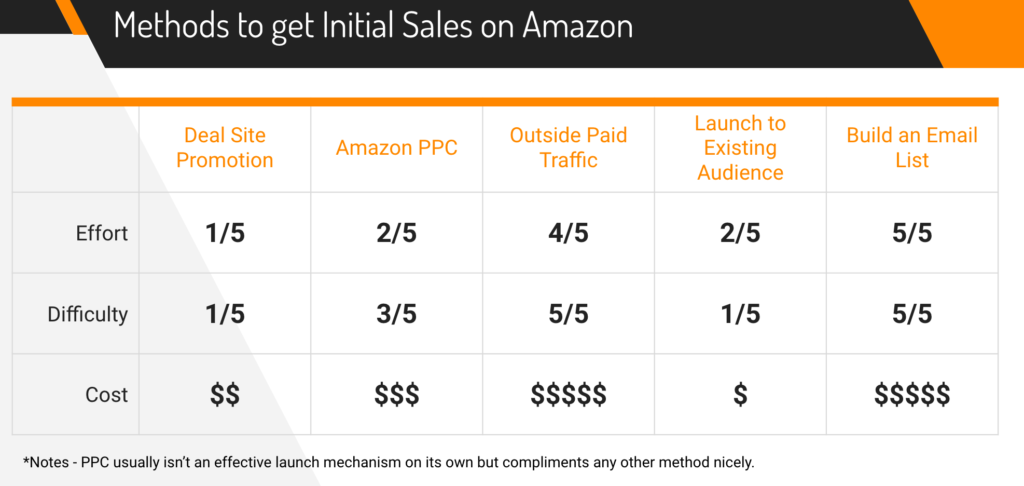
How will we get reviews?
So how are we going to start for the Million Dollar Case Study?
Use deal site promotions
For the Jungle Snugs launch, we will use the discounted marketplace, Jump Send, to get our initial sales velocity. This will help us improve our Best Seller Rank and 
Set up automated email campaigns
Alongside this, we want to complement our strategy with email campaigns. This helps to maximize our likelihood of getting a review and provides extra delight for Jungle Snugs customers.
Why set up automated email campaigns?
Well, on average, less than 1% of customers will leave a review on a product. We want to improve this. Therefore, we can increase the likelihood of converting a sale into a review by multiples if we add follow up email campaigns. Greg has experienced improvements of 4-10x just by adding simple follow-up email campaigns to customers. There is so much that you can do to add value for each purchase using this method, too.
However, like with any great power, comes great responsibility. There are some general guidelines when creating your email campaigns that you will want to follow, in order to generate the best results.
The email sequence for Amazon sellers
Greg has a simple three-email sequence, that follows this structure:
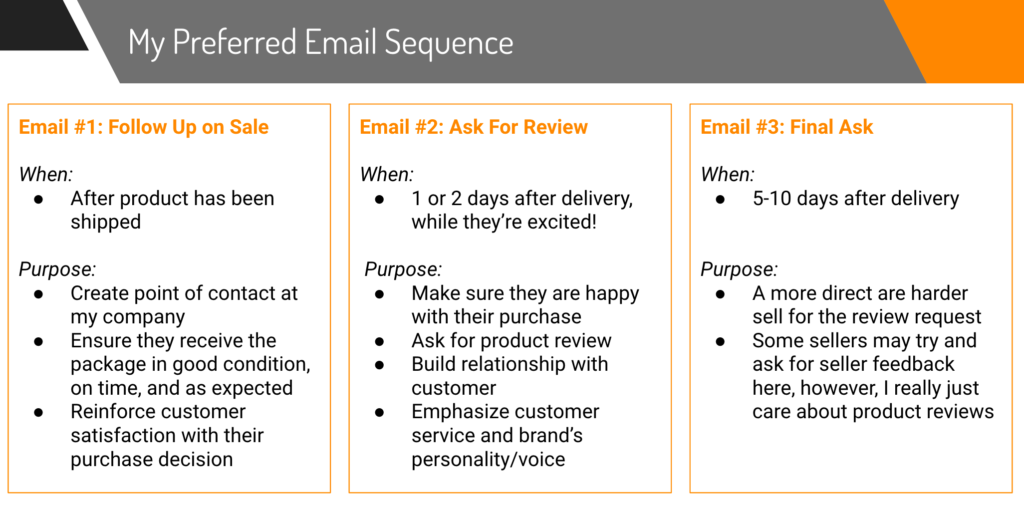
It's important to get this right, and to avoid bombarding your customers. In order to strike a balance, follow these guidelines:
- Keep it to three emails per purchase
- Ensure each of these three emails has a core single message, don't over complicate things!
- Ensure you use the same brand personality as in your product listing, and further instill the value of the product into the customers mind
- Add value if you can, for example, this could include sending an interesting attachment related to the product
Overall, you are letting the customer know that you are there, you are friendly and that you care. Many people who purchase from Amazon don't realize or forget that there's a business owner behind the product. This is your opportunity to shine.
A few nifty Jump Send features
One important feature built into Jump Send is that email campaigns are ended once a customer leaves a product review. This directly addresses the issue of not sending too many emails, or unwanted emails.
The other unique feature that you can include some blank stars encouraging the recipient to rate the product. Once you add the simple Autofill tag, your emails automatically include the product and some blank stars, like this:
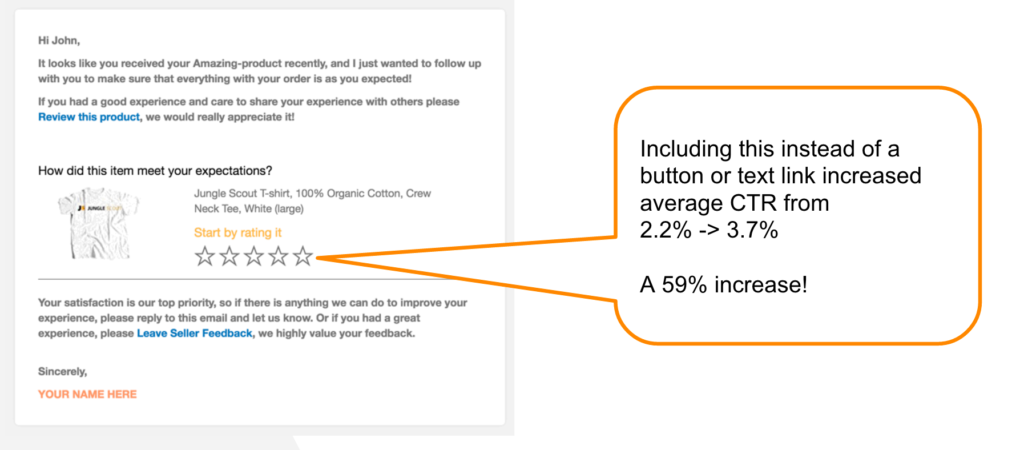
This simple visual has a tremendous impact on Click Through Rate: Greg’s tests have shown that it has improved clicks by 59%. That kind of lift can really impact the number of reviews you get for your product, which only reinforces social proof and conversion rate.
A note on returns
Sorry to bring up such a sad topic so early 🙁 But returns are a fact of life for any ecommerce business owner. The good news is, your automated emails can help with this too. By simply reaching out to your customers, you increase the chance that they will get in touch if something is wrong, rather then just leaving a bad review.
Additionally, Jump Send has another unique feature which allows you to trigger a separate email when a customer triggers a return request. This further allows you to ensure the customer has the best support when they really need it.
A look at getting immediate sales with promotions
Greg mentioned that generating sales velocity is imperative to securing a great keyword ranking, and the beauty of deals sites was that it could be done in just a few minutes, and that was not hyperbole. The simplicity of creating promotional coupons and getting the product in front of thousands of shoppers is not to be missed.
I went through the process with Jungle Stix, which is strikingly simple.
Step 1: Enter your ASIN to Jump Send
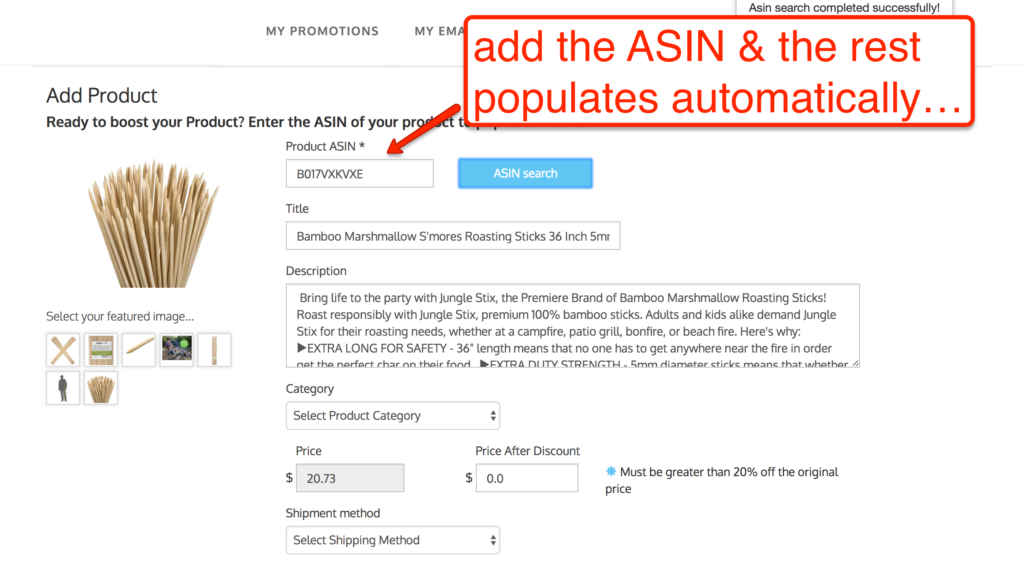
Step 2: Choose your approval method
How much do you want to monitor your giveaways? You can choose whether you want to approve each give away manually, or automatically approve all giveaways:
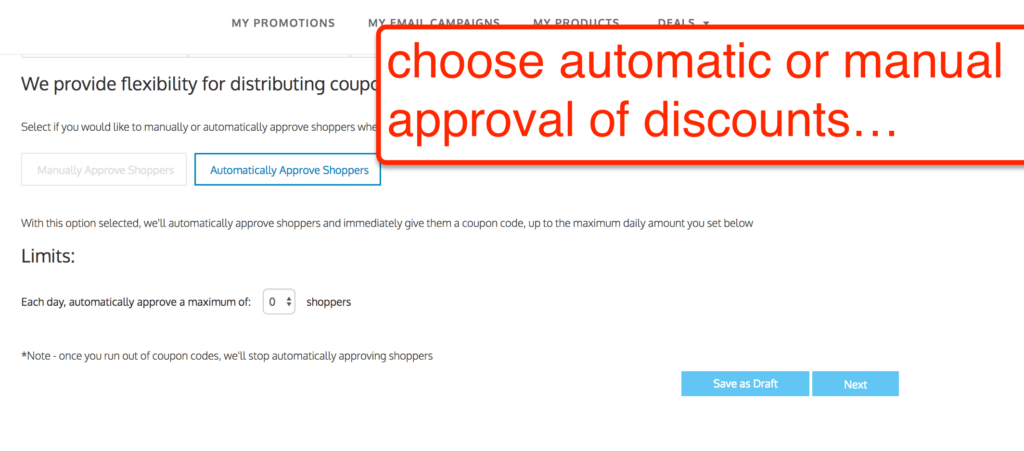
Step 3: Add coupons
Add the coupons that you will use. You set up your coupons in your Seller Central dashboard, and determine the exact discount that you want to offer. It is a very simple process, and here's a video to walk you through the whole process:
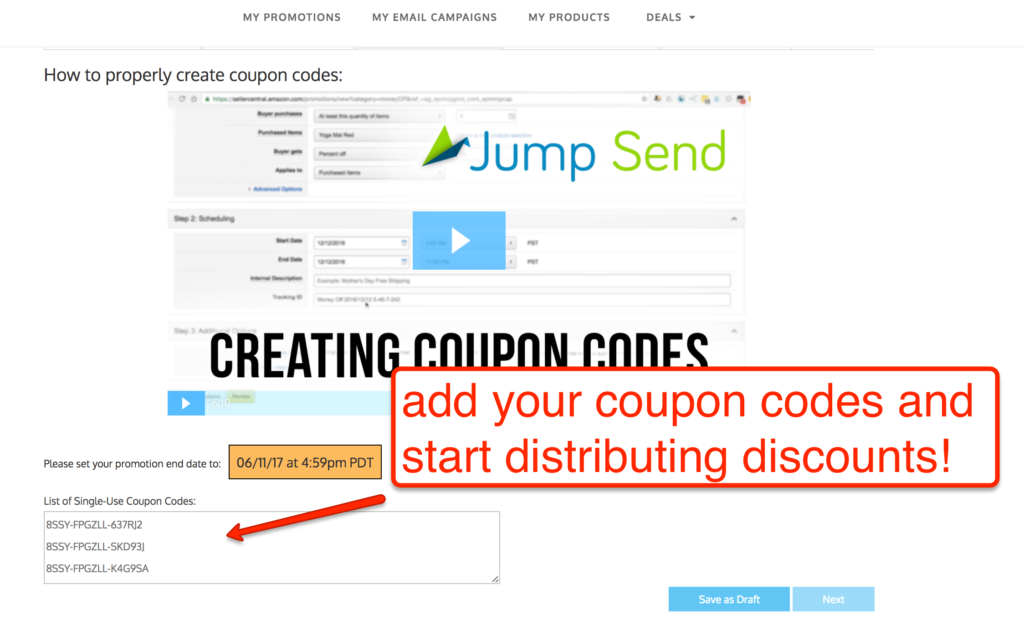
Step 4: Review & publish
You will want to review everything, and once you publish, you will start getting requests to purchase within minutes:
In Conclusion
So that is the our launch strategy recap. In a nutshell we are going to:
- Generate initial sales with promotional giveaways (on Jump Send)
- Run email campaigns to generate more reviews
- Run Pay Per Click campaigns to get additional exposure for our main keywords
Join us next week with Amazon PPC Expert Brent Zahradnik, to learn how to set up and execute profitable pay per click campaigns (PPC). The webinar will be held on Wednesday, May 17th at 1p ET/10a PT:
JOIN THE MILLION DOLLAR CASE STUDY
This will be highly valuable content for new sellers and experienced sellers alike, see you there!

